KS2 Angles Worksheets
Angles at a Point
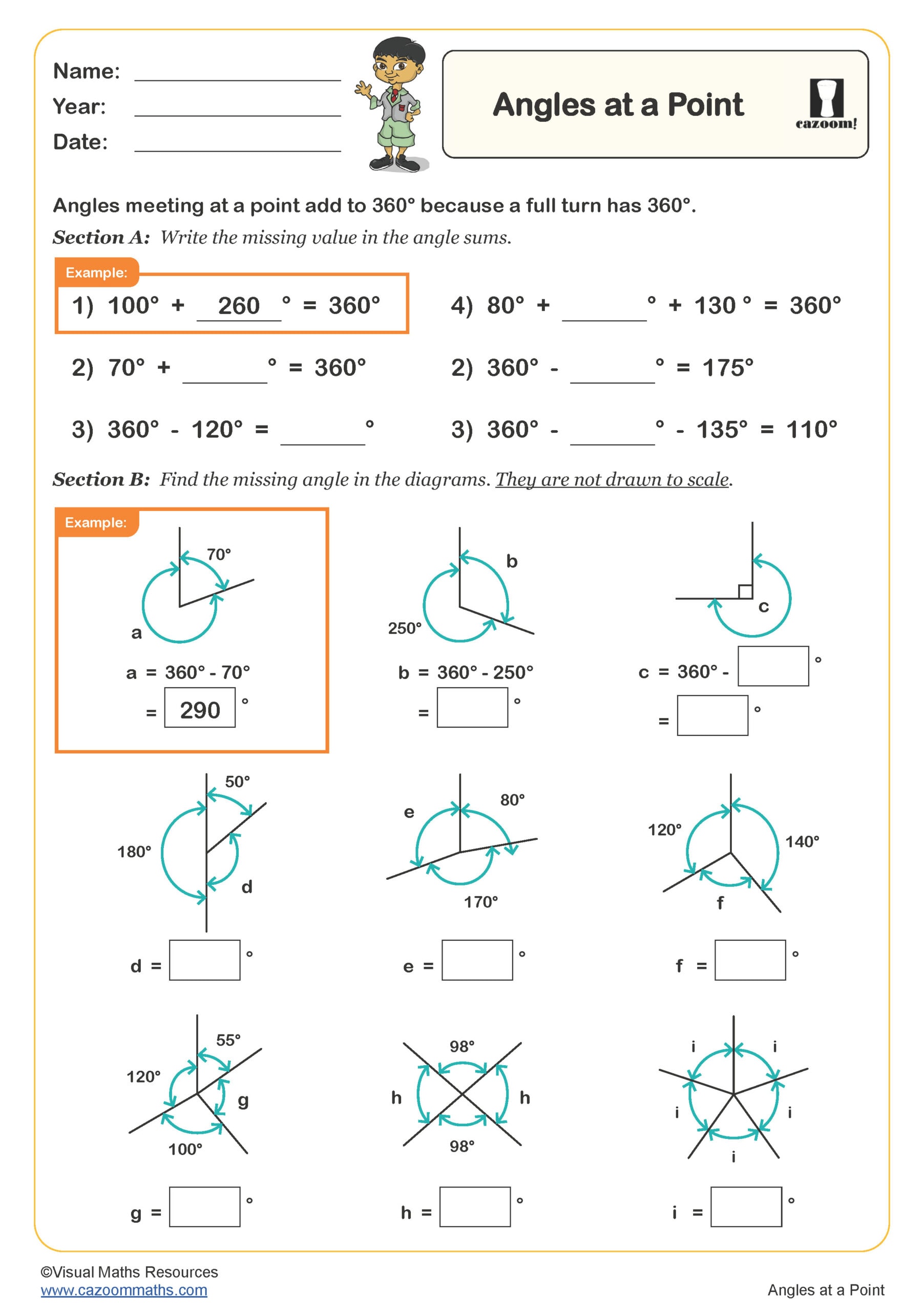
Angles in Quadrilaterals (A)
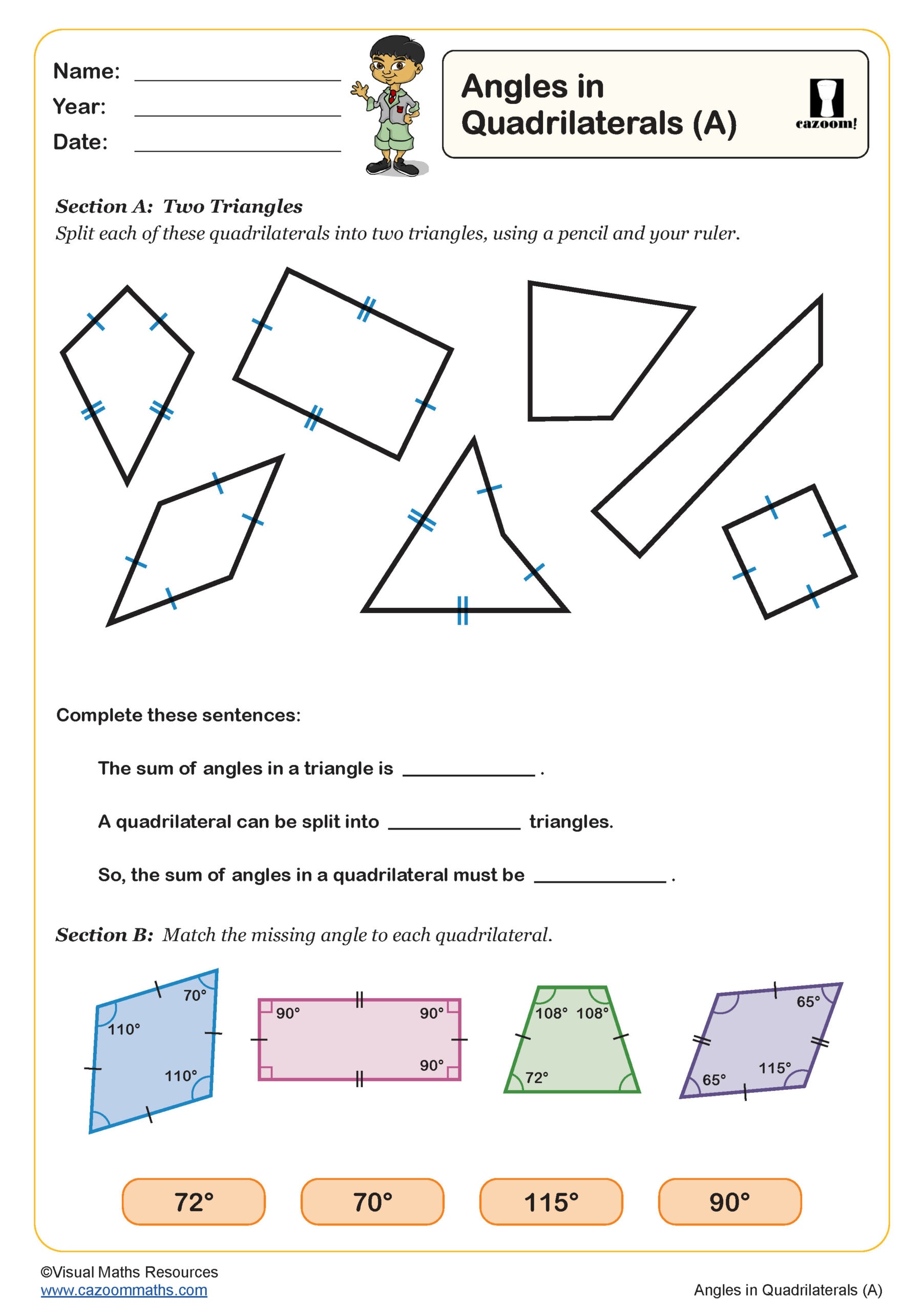
Angles in Quadrilaterals (B)
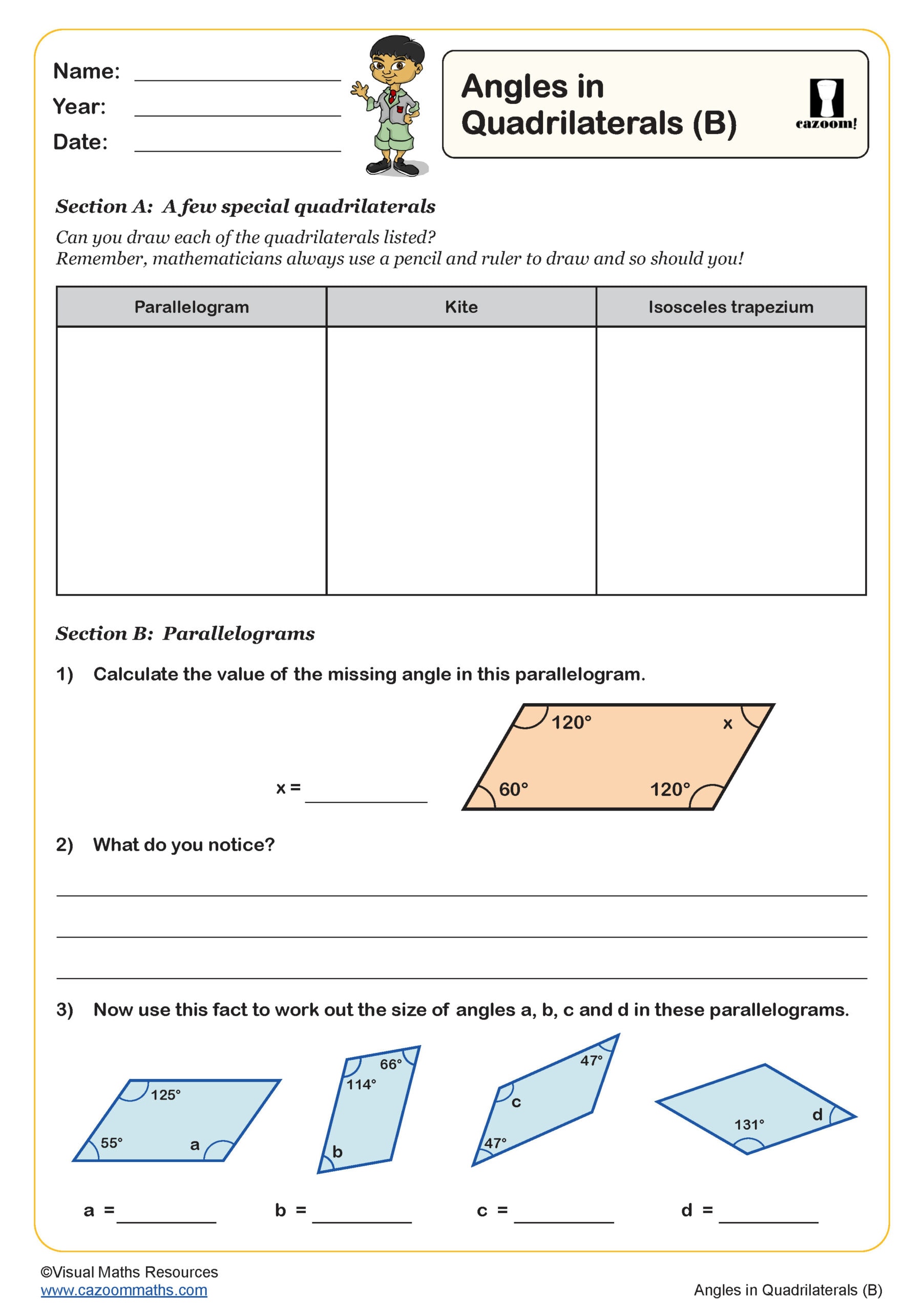
Angles in Triangles (A)

Angles in Triangles (B)

Angles in Triangles (C)
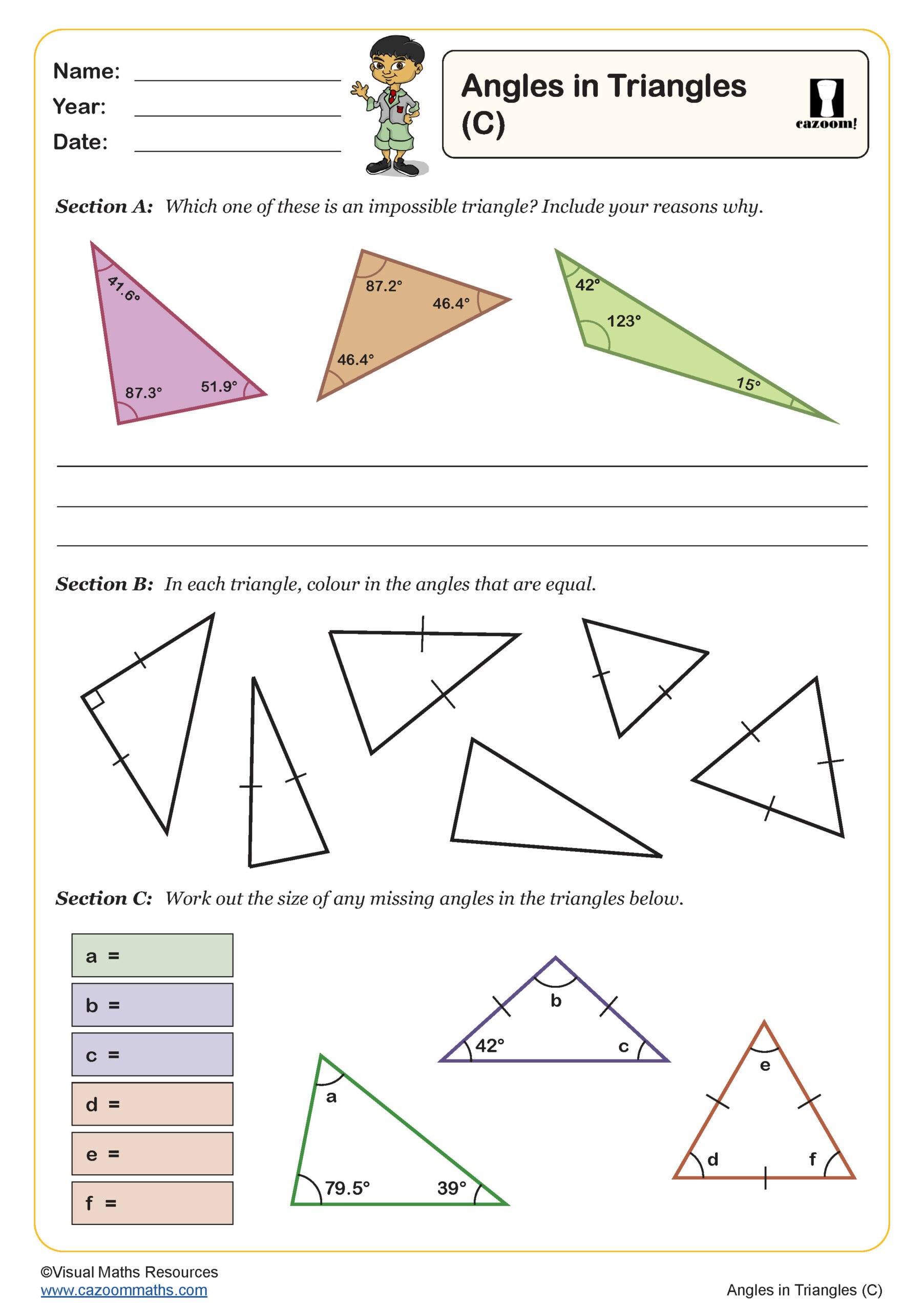
Angles in Triangles (D)
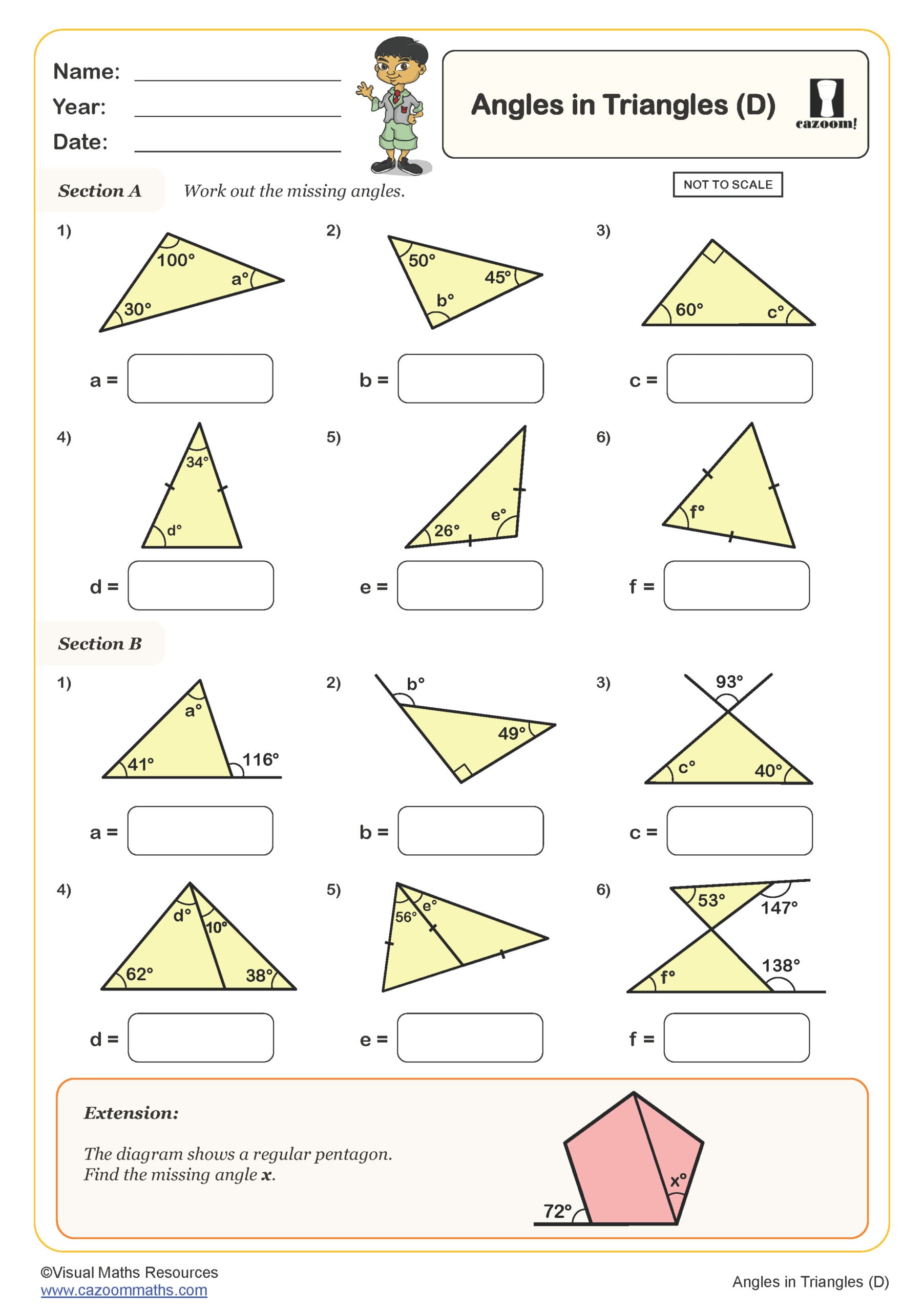
Calculating Angles (A)
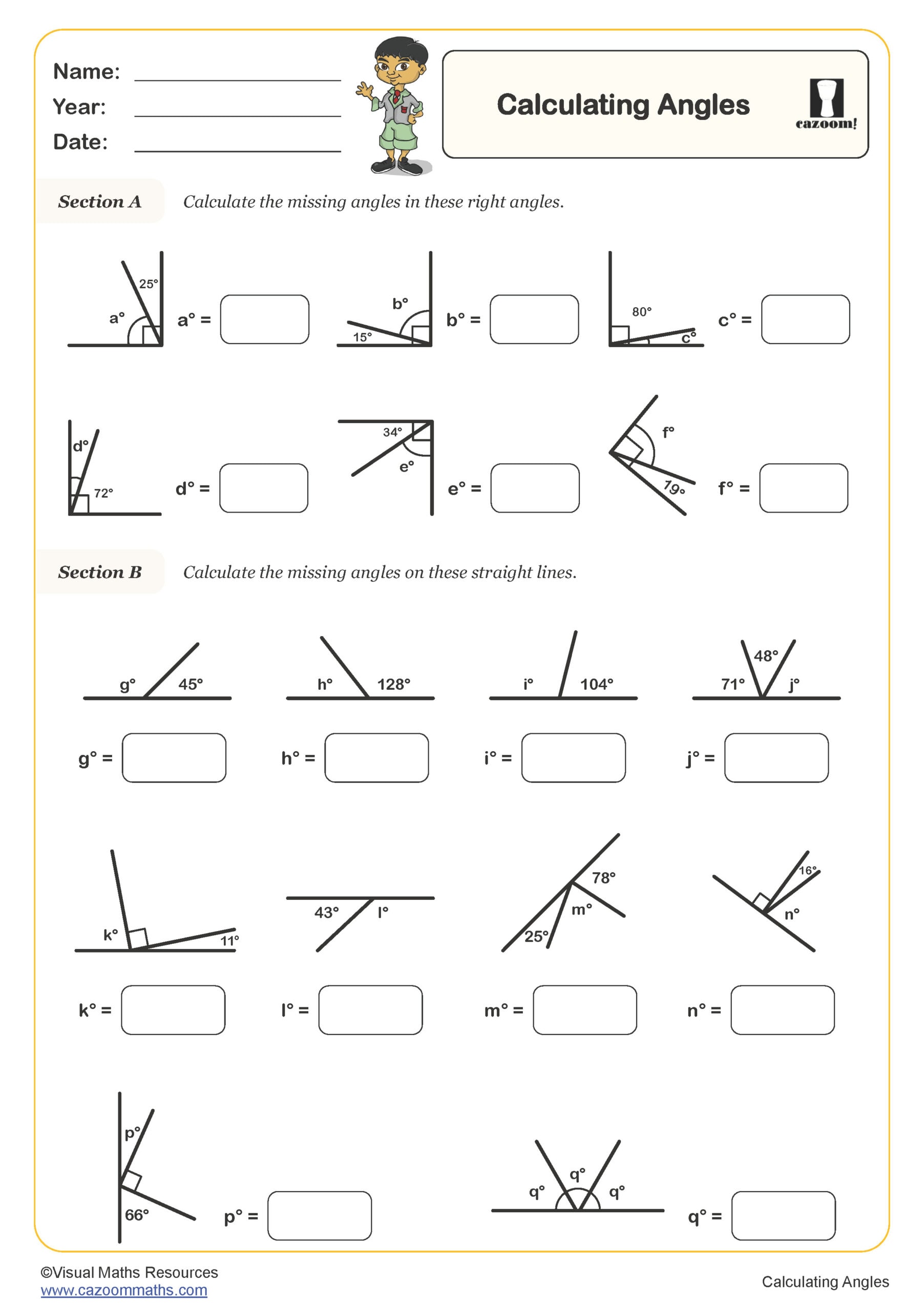
Comparing angles with 90 degrees, 45 degrees and 135 degrees
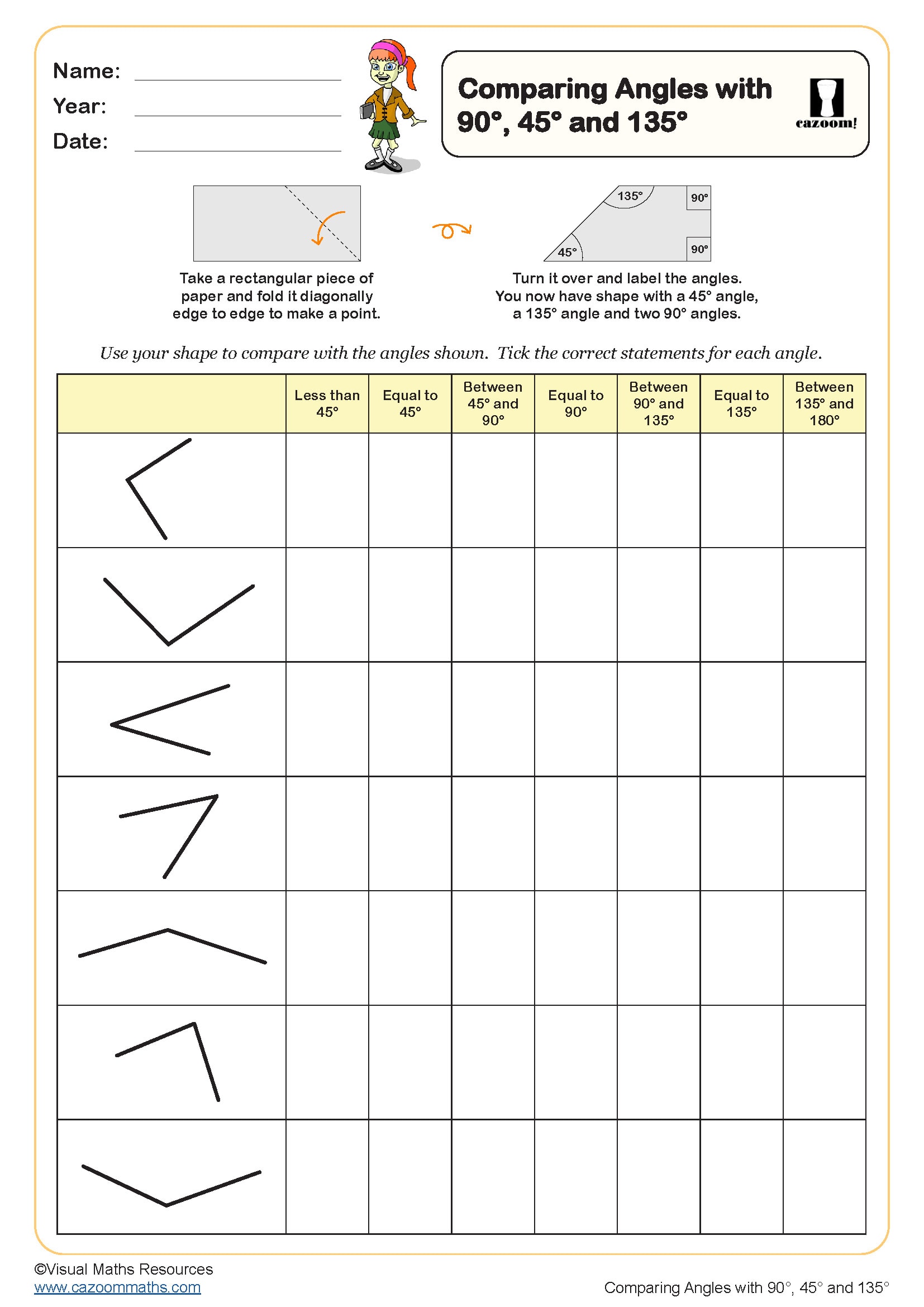
Drawing and Measuring Angles
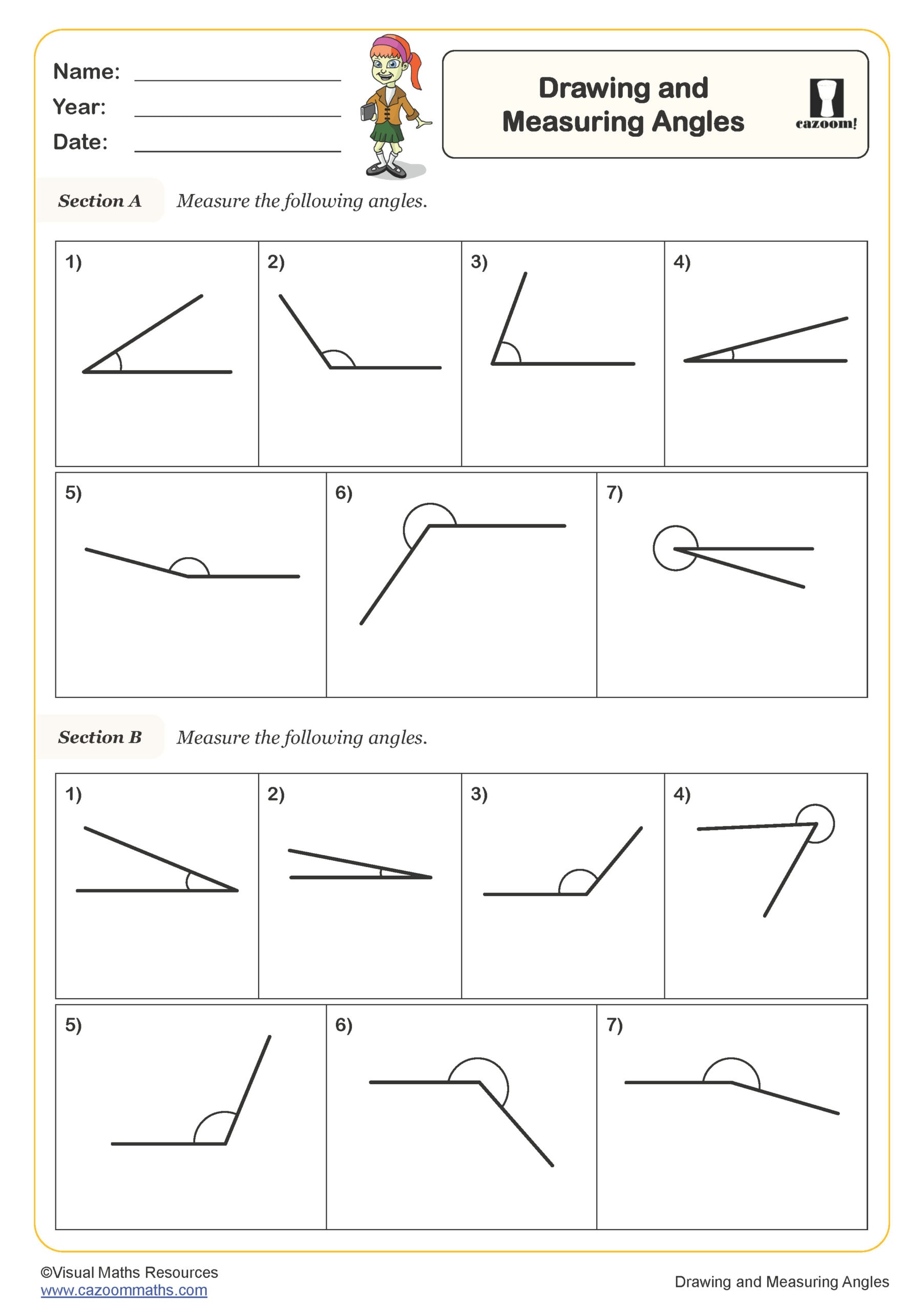
Estimating Angles

Identifying Angles
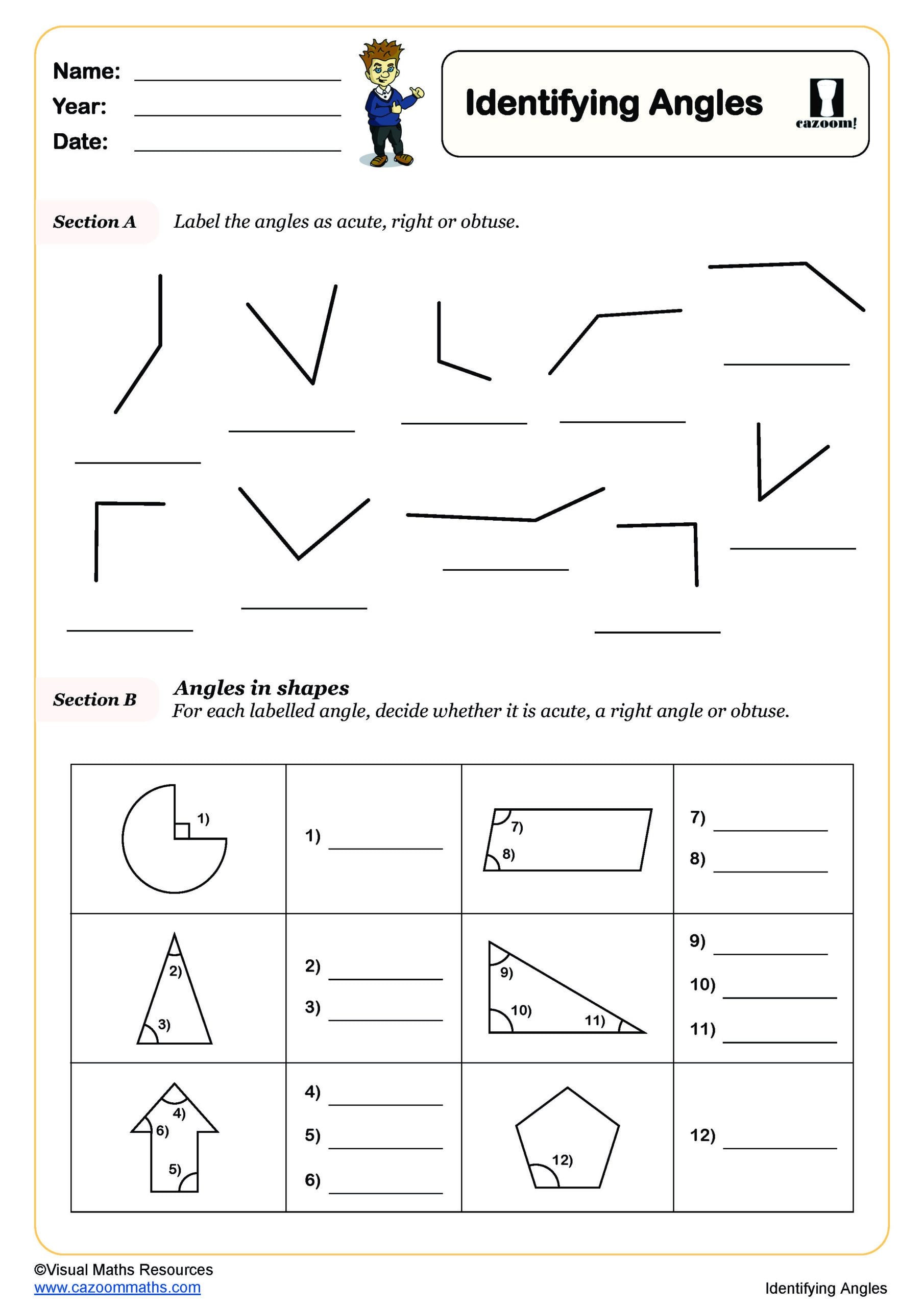
Parallel and Perpendicular Lines
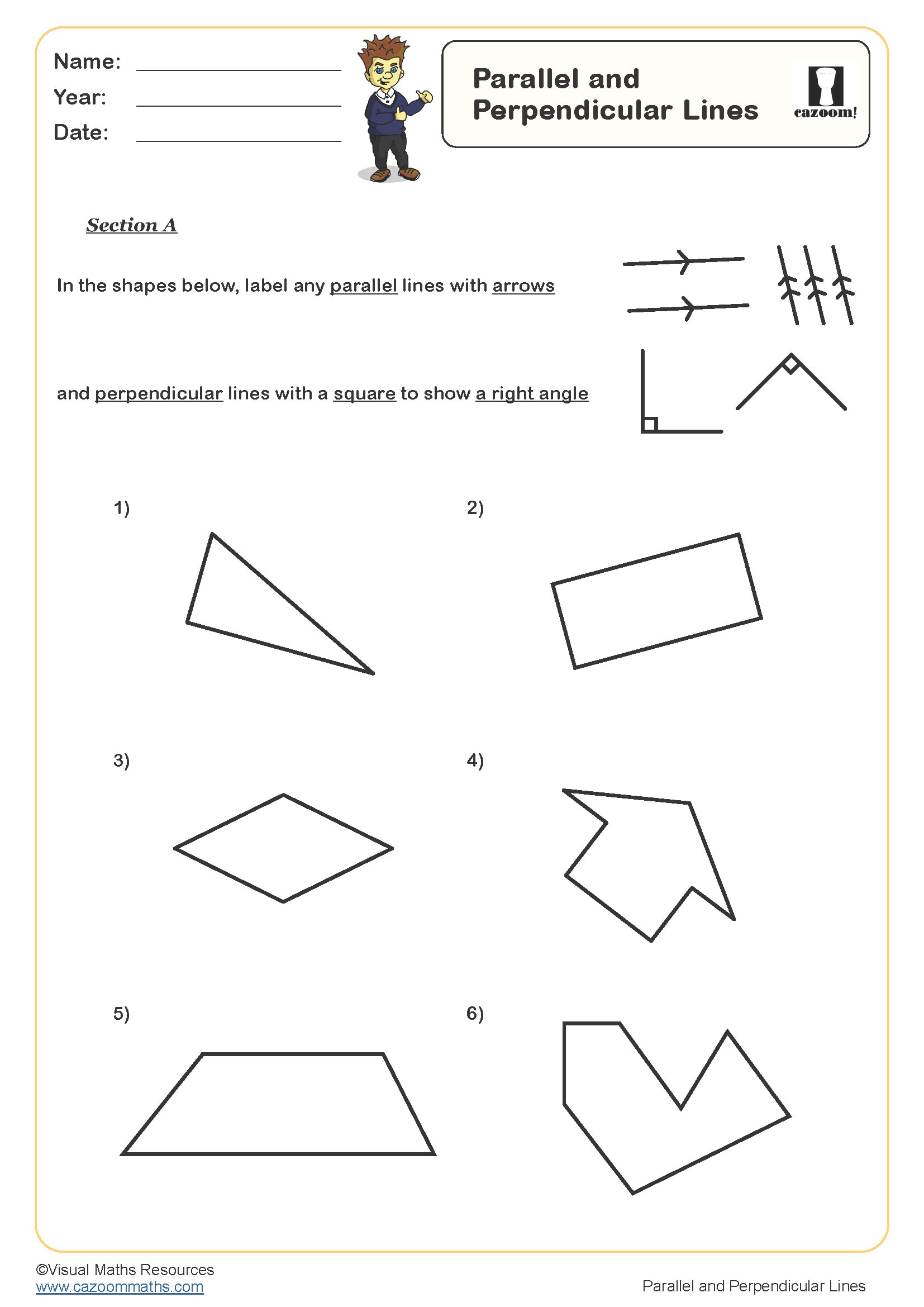
Right angles
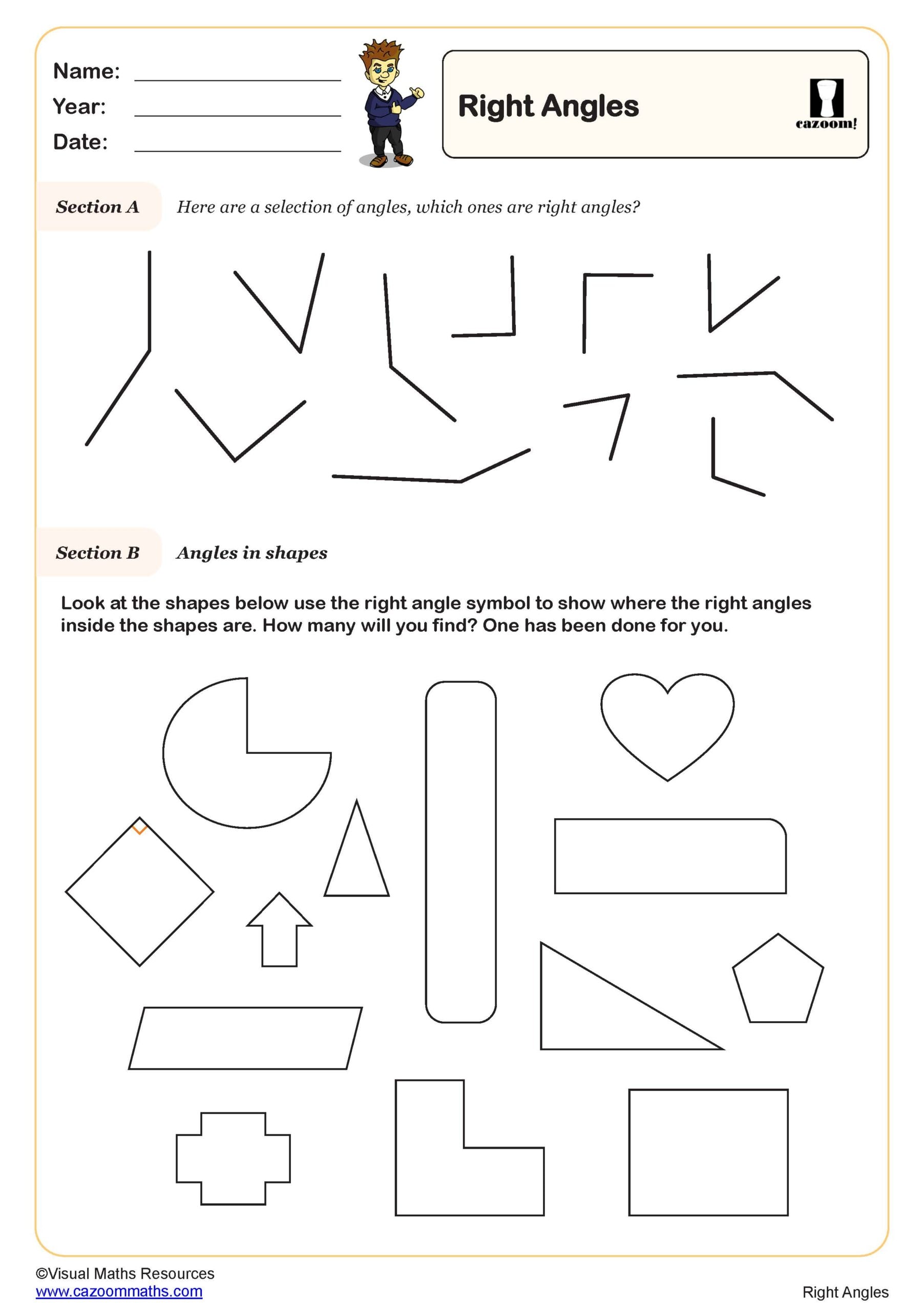
Turning Angles (A)
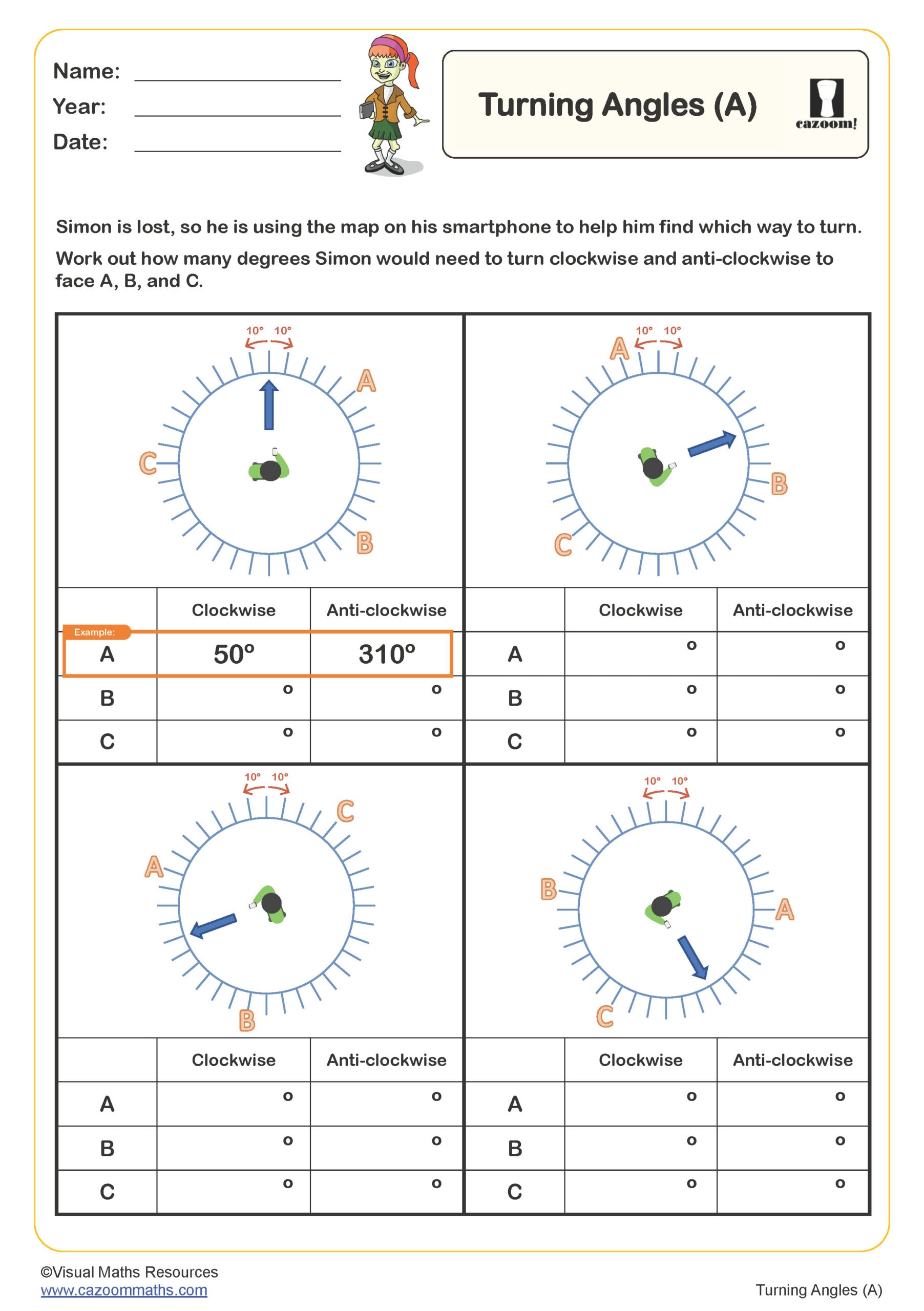
Turning Angles (B)

Vertically Opposite Angles

PRINTABLE PDF ANGLES KS2 WORKSHEETS WITH ANSWERS
Check out our downloadable Angles Worksheets KS2 which will improve your student’s knowledge of various mathematical calculations related to angles. For example, our worksheets can help children identify angles, parallel and perpendicular angles, interior and exterior angles, drawing angles, measuring angles, estimating angles, and many more related concepts. These worksheets are created in easy-to-download PDF format, include answers, and are designed to help young learners better understand and practise their geometry skills. These are excellent resources that will make the learning process fun and interesting!
What is Angle in Geometry?
In geometry, the concept of an angle refers to the amount of rotation or turn between two intersecting lines; these intersecting lines are usually called rays. Imagine opening a book partially: the corner of the open side forms an angle. The point where the lines or rays meet is called the vertex, while the two lines form the arms or sides of the angle. Angles are measured in degrees, using a tool called a protractor. There are different types of angles based on their sizes: acute (less than 90 degrees), right (exactly 90 degrees), obtuse (between 90 and 180 degrees), and straight (180 degrees). Understanding angles is fundamental in many areas of maths and real-life applications.
Understanding The Concept Of Angles
Understanding what an angle is can be compared to thinking about the space between two lines that meet. Think of a door that’s open just a little; the gap between the door and the frame represents an angle. Its vertex will always be where they meet, while the door and frame act as arms of it. To measure angles we use a tool called a protractor and degree units. There are several types of angles but a few common ones are acute, right, and obtuse. Acute is sharper and less than 90 degrees. The right is exactly 90 degrees like if you were to stand up a book. And obtuse is wider than 90 but under 180 degrees. Understanding all this helps us in many ways such as design, construction, and even understanding natural stuff.
Use of Angles in Real Life
Angles are essential in real life. It plays a big role in many different ways like designing buildings and bridges. They also help for more simple tasks like when you’re using a satellite dish or solar panel, the correct angle ensures optimal reception or absorption of sunlight. Sports players even use it to their advantage. For example, snooker and golf players calculate the best angle to strike with. We even use this concept in simple tasks like cutting a pie or adjusting a sunshade tilt. Construction and technology are two very important things that require angles to function properly. But also it helps shape our world on a daily basis, whether we realize it or not.